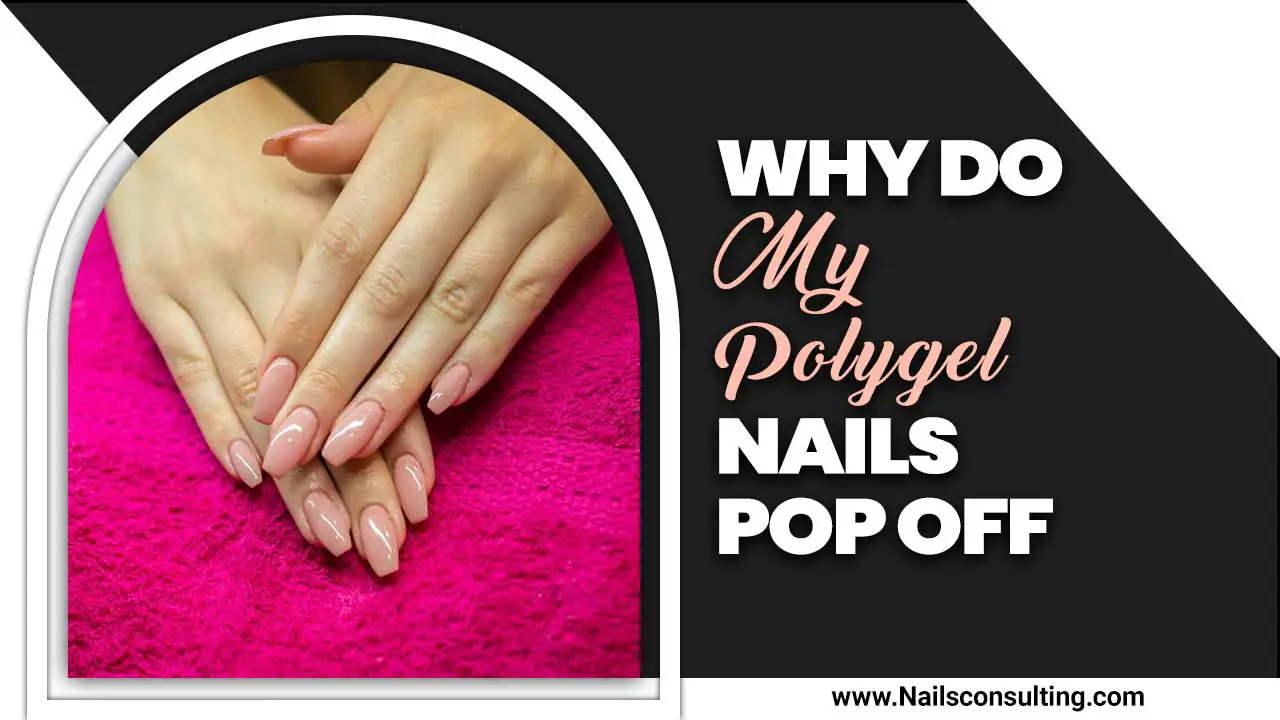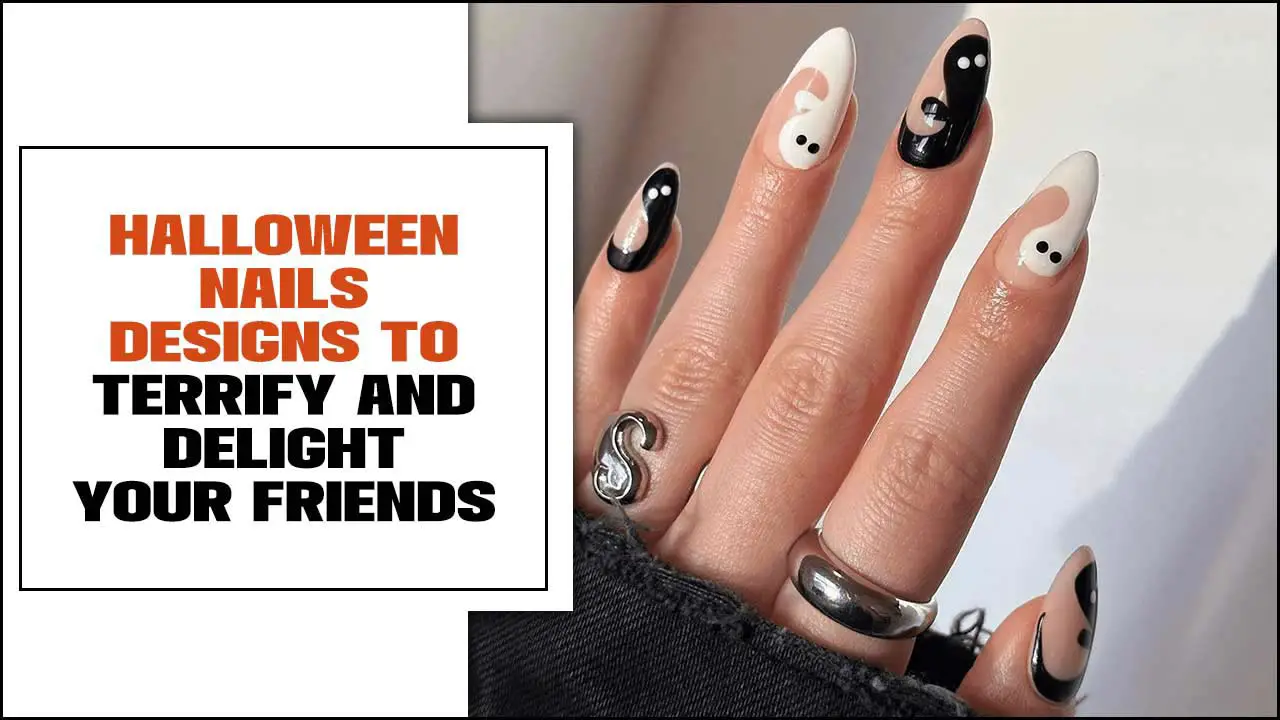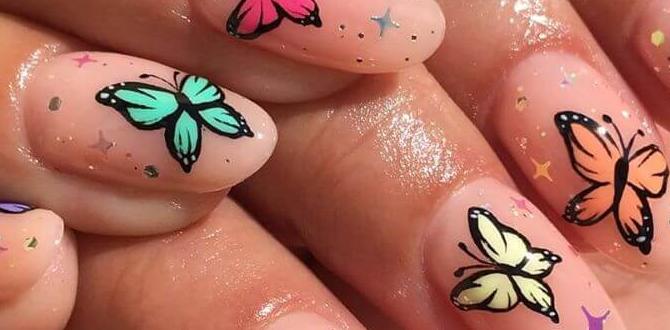Yes, you absolutely can achieve gorgeous gradient ombre nails at home! With a few simple tools and our easy-to-follow secrets, you’ll master this chic, blended look that’s perfect for any occasion. Get ready to impress yourself and everyone else with salon-quality results right from your living room.
Dreaming of those beautiful, seamlessly blended ombre nails you see everywhere, but think it’s too complicated to do yourself? You’re not alone! Many people believe gradient ombre nails are a salon-exclusive art form, but that couldn’t be further from the truth. The magic of ombre lies in its effortless blend, and achieving it at home is totally achievable with the right techniques. Forget streaky messes or uneven transitions; we’re here to demystify the process and reveal the proven secrets that will have you creating stunning gradient looks with confidence. Get ready to elevate your DIY manicure game!
Your Ultimate Guide to At-Home Gradient Ombre Nails
Gradient ombre nails are a beautiful way to add depth and dimension to your manicure. Instead of a single solid color, ombre features a smooth transition from one shade to another. This can be done in a classic light-to-dark fade, or by blending two complementary or contrasting colors for a bolder statement. The beauty of ombre is its versatility – it can be subtle and sophisticated or vibrant and playful. Ready to dive in and learn how to create this trendy look yourself?
Why Gradient Ombre Nails Are Perfect for Beginners
Don’t let the seamless blend fool you! Gradient ombre is actually quite forgiving for beginners. Unlike intricate nail art that requires a steady hand for tiny details, ombre is all about blending. Mistakes are often easily corrected, and the blended nature of the design means perfection isn’t always the goal – a soft flow is! Plus, the tools needed are readily available and simple to use. Let’s get started with what you’ll need.
Essential Tools and Materials for Your Ombre Masterpiece
Gathering the right supplies is half the battle won! You don’t need a professional kit to create stunning ombre nails. Here’s a breakdown of everything you’ll need, along with why each item is important.
What You’ll Need:
- Base Coat: Prepares your nails and helps polish adhere better.
- Nail Polish Colors: At least two or three colors that transition well. Lighter shades often work best for the blend.
- Top Coat: Seals your design and adds shine.
- Cosmetic Sponge: A clean makeup sponge is your secret weapon for blending.
- Small Dish or Palette: To pour your polish onto for easy sponge dipping.
- Rubbing Alcohol or Nail Polish Remover: For easy cleanup and to help blend polish on the sponge.
- Cuticle Protector (Optional but Recommended): Like liquid latex or a thick balm to keep polish off your skin.
- Nail File and Buffer: For shaping and smoothing nails.
- Orange Stick or Cuticle Pusher: For cleaning up edges.
- Paper Towels: For dabbing excess polish off the sponge and general cleanup.
Step-by-Step: Achieving the Perfect Gradient Ombre
Now for the fun part! Follow these steps carefully, and you’ll be rocking flawless ombre nails in no time. Remember, practice makes perfect, so don’t get discouraged if your first attempt isn’t magazine-ready. Embrace the process and have fun!
Step 1: Prep Your Nails
Just like any manicure, a good base is crucial. Start by filing your nails to your desired shape and buffing them lightly to create a smooth surface. Push back your cuticles gently with an orange stick or cuticle pusher. Then, apply a thin layer of your base coat and let it dry completely. This protects your natural nails and ensures your polish lasts longer. A well-prepped nail makes all the difference!
Step 2: Choose Your Colors and Palette
Select your polishes. For a classic look, try white and a pastel, or a nude and a darker shade. For something bolder, consider vibrant complementary colors. Pour a small amount of each polish next to each other onto your palette or small dish. Don’t overfill it; a little goes a long way.
Step 3: Create the Blend on Your Sponge
This is the magic step! Cut your cosmetic sponge into a few wedges. Lightly dampen a wedge of the sponge with a bit of rubbing alcohol or water. Dab sections of your chosen nail polishes onto the sponge, side-by-side, in the order you want them to appear on your nail (e.g., lighter color on one end, darker on the other). The sponge is porous, so it will absorb some of the polish, which is exactly what we want for a blended effect.
You might need to reapply polish to your sponge after each nail, depending on how much polish it absorbs. Consider this a vital part of the process for achieving a seamless gradient. Think of it as painting on a very porous canvas!
Step 4: Apply the Ombre to Your Nail
This requires a bit of a dabbing motion. Press the sponge firmly but gently onto your nail, rolling slightly from side to side. This transfers the blended polish from the sponge to your nail. You’ll likely need to go over it a few times to build up the color and ensure a smooth transition. The goal is to dab, dab, dab, not swipe!
Don’t worry if it looks a little patchy at first. You can often layer more dabs onto the nail until you achieve the desired opacity and blend. You can also use a little bit of nail remover on a brush to gently blend any harsh lines on the nail itself if needed, but be very careful with this technique.
Step 5: Repeat for Other Nails
Clean off your sponge (a quick dab on a paper towel with remover works well) and repeat the process for each nail. If you’re using three colors, you can arrange them on the sponge accordingly. For instance, for a three-color ombre, you might place color A, then color B in the middle, and color C on the other end of the sponge.
Step 6: Clean Up Your Cuticles
Once the polish is applied to all your nails, it’s time for cleanup. This is where your cuticle protector comes in handy! If you haven’t used it, carefully use an orange stick dipped in nail polish remover to clean up any polish that got onto your skin. This step makes a huge difference in the final, polished look. Take your time here; precision is key for a professional finish.
Step 7: Apply Top Coat and Let Dry
Once your ombre design is completely dry, apply a generous layer of your favorite top coat. This smooths out any texture from the sponge application, seals the polish, and adds a beautiful glossy finish. Ensure you cap the tips of your nails by running the brush along the free edge to prevent chipping. Let them dry thoroughly.
Pro Tips and “Proven Secrets” for Flawless Ombre
Want to take your ombre nails from good to absolutely stunning? These insider tricks will help you achieve professional-level results every time. They are the little secrets that make a big difference!
Secrets Revealed:
- The Sponge Matters: Use a clean, dense cosmetic sponge. Beauty blender sponges or disposable makeup sponges work well. Avoid sponges with very large pores, as they can create a less smooth gradient. You can find great options at most beauty retailers or online—for example, Ulta offers beauty blender sponges perfect for this.
- Layering is Key: Don’t expect perfect opacity in one go. Build up your color gradually with multiple light dabbing applications. This allows for better blending and control.
- Work Quickly: Nail polish can dry fast, especially on a sponge. Have everything ready to go before you start applying. Plan your moves!
- The “Roll” Technique: Instead of just pressing straight down, try a gentle rolling motion with the sponge across the nail. This helps ensure even color transfer and better blending.
- Two-Tone vs. Three-Tone: For beginners, starting with two colors is often easier. Once you’re comfortable, you can experiment with three or even more colors for a complex gradient.
- Color Combinations: For a classic, soft ombre, try a white base with any color on top, or a nude base with pink, peach, or coral. For a bolder look, try navy and teal, or purple and pink. You can find inspiration on color pairing from sites like ColorHex, which provides extensive color charts and codes.
- Clean Up Strategically: Using a thick balm (like Vaseline) or liquid latex around your cuticles before sponging can save you a lot of messy cleanup time. Just peel it off after you’ve applied the polish.
- Use a Sticky Tape Method to Clean the Sponge: After dipping the sponge in polish, before applying to the nail, press it onto a piece of sticky tape. This removes excess polish and helps create a cleaner, more refined blend on the nail itself.
You can also consider using a special ombre sponge if you notice you’re using up a lot of regular cosmetic sponges. However, cutting up a standard makeup sponge is an inexpensive and effective way to start!
Troubleshooting Common Ombre Nail Problems
Even with the best intentions, sometimes things don’t go exactly as planned. Here are some common issues and their solutions:
| Problem | Solution |
|---|---|
| Streaky or uneven gradient | Apply more thin layers of polish with the sponge. Ensure you are dabbing gently and consistently. Try a rolling motion. You might also need to try again with a fresh section of the sponge and more polish. |
| Polish on surrounding skin | Use a cuticle protector (liquid latex or balm) beforehand. If you miss this step, carefully clean up with an orange stick dipped in nail polish remover. |
| Colors not blending well | Ensure you’re dabbing the colors side-by-side on the sponge. Lightly tapping the sponge on a piece of sticky tape before applying to the nail can sometimes help even out the polish load and improve blending. You can also try reapplying polish to the sponge and dabbing again.
For more advanced blending, some nail artists recommend spritzing the sponge with a cosmetic setting spray before applying polish. This can slightly dampen the sponge without diluting the polish, allowing for a smoother transfer. |
| Sponge soaking up too much polish | This is normal! You might need to reapply polish to the sponge after every 1-2 nails. Don’t be afraid to use enough polish on the sponge to get good coverage. |
| Texture from the sponge | A good, thick layer of top coat will smooth out most sponge texture. You might also consider using a smoothing or ridge-filling base coat. |
Frequently Asked Questions About Gradient Ombre Nails
Q1: Do I need special polish for ombre nails?
No, you can use any standard nail polish! Gel polish can also be used, but it requires curing under a UV/LED lamp between coats and can be a bit trickier for beginners to sponge effectively as it doesn’t self-level like regular polish.
Q2: How do I get a clean line between colors in ombre?
The beauty of ombre is the gradient, meaning a smooth blend, not usually a clean line. If you want a sharper transition, you’d typically use tape instead of a sponge. However, for a very clean blend, try to be precise with where you place the colors on the sponge and how you dab them onto the nail. A meticulous cleanup around the cuticles also helps.
Q3: Can I do ombre with glitter polish?
Yes! Glitter polish works wonderfully for ombre. You can use a glitter polish as one of your gradient colors or apply a glitter top coat over your blended colors for extra sparkle. For a full glitter gradient, apply the glitter polish directly to the sponge.
Q4: How many colors can I use for an ombre look?
You can use two, three, or even more colors for an ombre effect. Two colors are the easiest to start with. More colors can create a more complex and eye-catching look, but require more practice to master the blending on the sponge.
Q5: How long do at-home ombre nails last?
With proper prep, application of base and top coats, and careful cleanup, your ombre nails can last as long as a regular manicure, typically 5-7 days, sometimes longer. Using a good quality top coat and “capping” your nails (sealing the free edge) are key to longevity.
Q6: My sponge is getting messy quickly. What can I do?
It’s normal for cosmetic sponges to become saturated with polish. Cut your sponge into smaller sections so you can use a fresh area or a new piece for each nail or for reapplying color. Clean off excess polish from the sponge between nails by gently pressing it onto a paper towel.
Q7: Can I use a brush instead of a sponge for ombre?
While sponges are most popular for smooth, diffused gradients, some people achieve ombre effects with brushes. This usually involves layering polishes directly onto the nail and then using a clean, slightly damp brush to blend the edges. It takes more practice to get a seamless blend compared to the sponge method.
Are You Ready to Rock Your Own Gradient Ombre Nails?
See? You’ve got this! Gradient ombre nails are a fantastic way to express your creativity and sport a stylish manicure without leaving your home. From selecting your perfect color palette to mastering the sponge technique, each step is designed to be fun and rewarding. Remember to be patient with yourself, embrace the learning process, and don’t shy away from a little cleanup to perfect your look.
With these proven secrets and a little practice, you’ll be creating flawless, blended nail art that looks like it came straight from a professional salon. So go ahead, gather your supplies, pick out your favorite colors, and get ready to transform your nails into a beautiful work of art. Happy painting, and enjoy the compliments!





